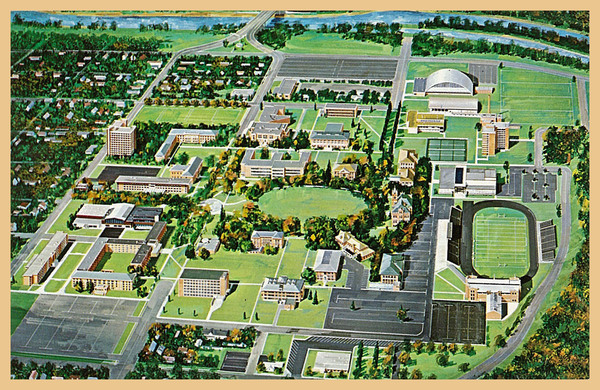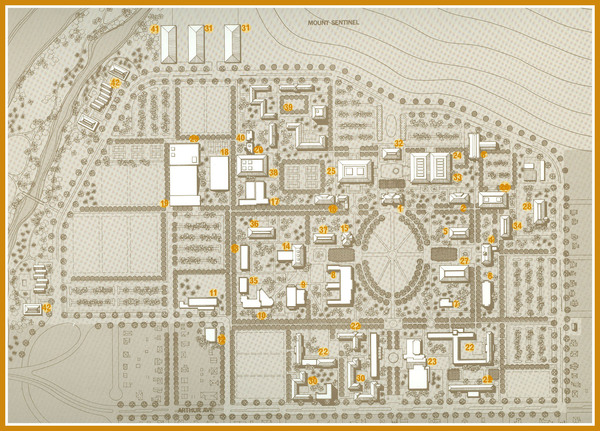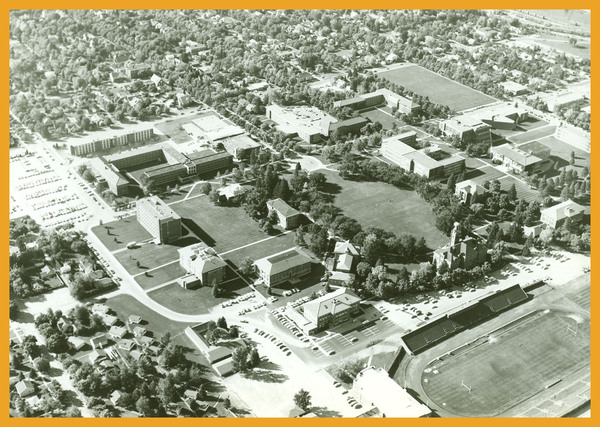1960 - TODAY
THE CAMPUS AS A CULTURAL RESOURCE

Architects rendering of campus, 1967.

Map of the 1964 Long Range Campus Plan.

Aerial view of campus, 1965.
By 1965 the University of Montana-Missoula campus had grown to over 120 acres and included buildings, roads, athletic facilities and performance halls. Throughout the 1960s, 70s, 80s and 90s the university continued to buy property as it became available within the boundary of the original Gilbert-Carsley plan. Today only a limited number of privately owned lots remain within the campus boundary.
In 1964 roughly 6,000 students were enrolled at the university, but that number was expected to increase to over 9,000 students by 1975. In order to prepare for the rise in population the university commissioned the architectural firm of Saski, Walker, Lackey Associates Inc. to create a Long Term Campus Plan. The plan was not directly linked to any source of funding and as a result it focused on the making the best use of existing university land.
The 1964 plan called the campus a "cultural resource" and sought to make the grounds accessible not only to the students, faculty and staff but to the community of Missoula as well. The campus was to be divided into relationship areas, the most important of which was the academic core. The academic core included the oval and buildings surrounding it. Outside the core would be peripheral structures and services like housing and athletics. The 1964 plan did not include any recommendations for additional land acquisition by the university.

